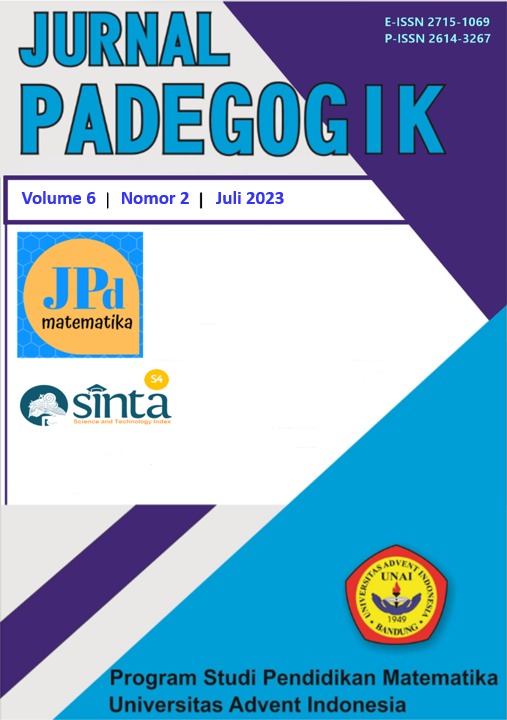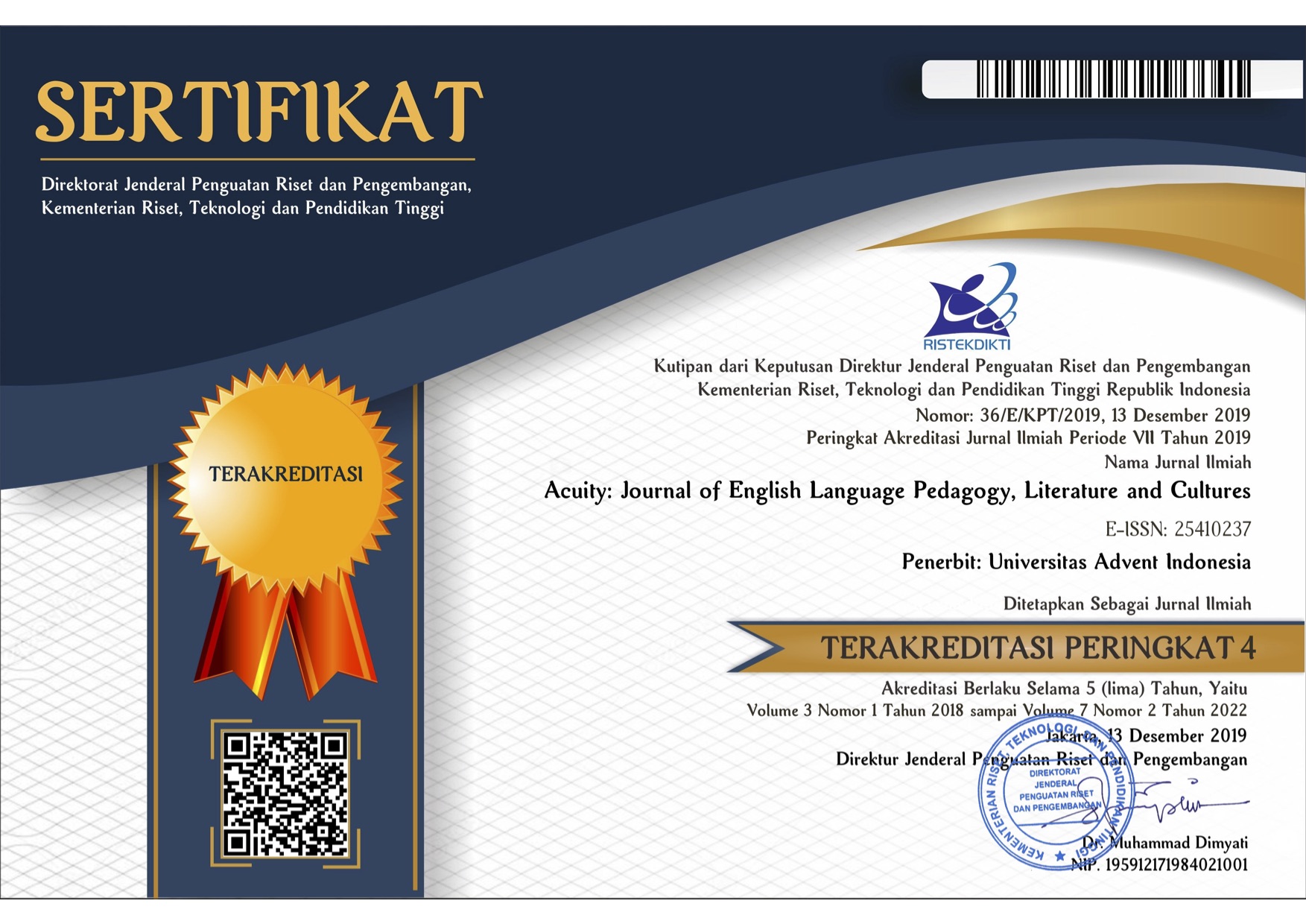Didactical Design for Cubes and Cuboids to Overcome SMP Students Mathematical Reasoning Obstacles
Keywords:
Mathematical reasoning, students’ difficulties, cube and cuboid, didactical design.Abstract
This research is based of the lowness the Junior High School students’ mathematical reasoning ability at the Cube and Cuboid material. The research method used is didactical design. The first step of this research was to diagnose the Junior High School student’s difficulties in mathematical reasoning. The test was done towards 24 students at SMP Advent II Setiabudhi and 11 students at SMP Advent Parongpong. The result of the diagnostic test shows that the students had difficulties in Mathematical reasoning of Cube and cuboid material, difficulty in determining the spot of the line in the cube and cuboid that made, difficulty in doing the mathematical manipulation, difficulty in arranging the the prove of the cube and cuboid concept, difficulty in checking the argument validation, and difficulty in making a pattern for a generalization. Based on the difficulties of the students’ mathematical reasoning, the didactical design of learning was made with the purpose to overcome the Junior High Scholl students’ mathematical reasoning difficulties, that are: Give the steps to determine cuboid nets, adding more examples which has mathematical manipulation in it, give more complete proof for cube area using nets with colors, using graphs to help in making generalization, give example for checking arguments validities, and give example to determine the nth pattern.
Downloads
References
Chotimah, B. K. (2018). Pengaruh Model Pembelajaran dan Minat Siswa Terhadap Hasil Belajar Matematika. Jurnal Pendidikan Matematika Vol. 1(1), 16-25.
Fajriyah, L., Nugraha, Y., Akber, P., Bernard, M. (2019). Pengaruh Kemandirian Belajar Siswa SMP Terhadap Kemampuan Penalaran Matematis. Journal On Education Vol. 1(2), 288-296.
Gustiadi, A., Agustyaningrum, N. & Hanggara, Y. (2021). Analisis Kemampuan Penalaran Matematis Siswa Dalam Menyelesaikan Soal Materi Dimensi Tiga. Jurnal BSIS Vol. 4(1), 337-348.
Lestari, D. & Sardin (2020). Efektifitas Model Pembelajaran Knisley Terhadap Penalaran Matematis Siswa. Jurnal Akademik Pendidikan Matematika Vol. 6 (1), 49-52.
Maharani, S. & Bernard, M. (2018). Analisis Hubungan Resiliensi Matematik Terhadap Kemampuan Pemecahan Masalah Siswa Pada Materi Lingkaran. Jurnal Pembelajaran Matematika Inovatif Vol. 1(5), 819-826.
Moleong, L. J. (2017). Metode Penelitian Kualitatif. Bandung: PT. Remaja Rosdakarya.
Mutia (2017). Analisis Kesulitan Siswa SMP dalam Memahami Konsep Kubus Balok dan Alternatif Pemecahannya. Βετα Jurnal Tadris Matematika Vol. 10(10, 83-102.
Rahmah, S., Haqq, A.A., Nursuprianah, I. (2018). Desain Didaktis Dengan Strategi Scaffolding Pada Pembelajaran Peluang. Jurnal Pembelajaran Matematika Inovatif Vol. 10(10), 1-11.
Rodiah, S. & Triyana, V. A. (2019). Analisis Kemampuan Penalaran Matematis Siswa Kelas IX MTS Pada Materi Sistem Persamaan Linier Dua Variabel Berdasarkan Gender. Jurnal Kajian Pembelajaran Matematika Vol. 3(1), 1-8.
Suryadi, D. (2011). Didactical Design Research (DDR) Dalam Pengembangan Pembelajaran Matematika. Prosiding Joint Conference UPI-UiTM 2011.
Wahab, Junaedi. Dkk (2021). Media Pembelajaran Matematika. Aceh: Yayasan Penerbit Muhammad Zaini.
Wibowo, A. (2017). Pengaruh Pendekatan Pembelajaran Matematika Realistik dan Saintifik terhadap Prestasi Belajar, Kemampuan Penalaran Matematis dan Minat Belajar. Jurnal Riset Pendidikan Matematika Vol. 4(1), 1-10.

Downloads
Published
How to Cite
Issue
Section
License
Copyright (c) 2023 Jurnal Padegogik

This work is licensed under a Creative Commons Attribution-NonCommercial-ShareAlike 4.0 International License.
The submitting author warrants that
- The submission is original and that she/he is the author of the submission together with the named co-authors; to the extend the submission incorporates text passages, figures, data, or other material from the work of others, the submitting author has obtained any necessary permission.
- Articles in this journal are published under the Creative Commons Share-Alike Attribution Licence (CC-BY-SA What does this mean?). This is to get more legal certainty about what readers can do with published articles, and thus a wider dissemination and archiving, which in turn makes publishing with this journal more valuable for you, the authors.
- By submitting an article the author grants to this journal the non-exclusive right to publish it. The author retains the copyright and the publishing rights for his article without any restrictions.







